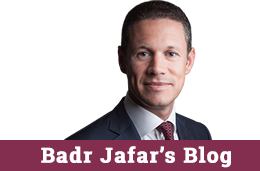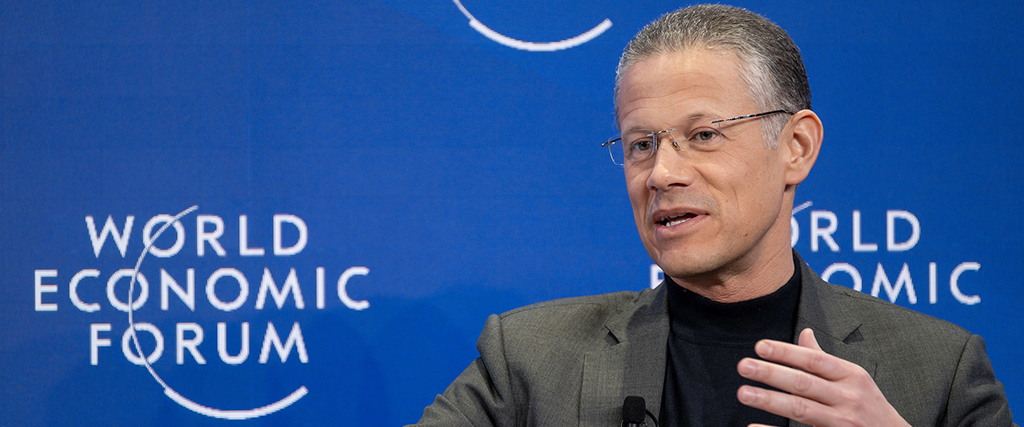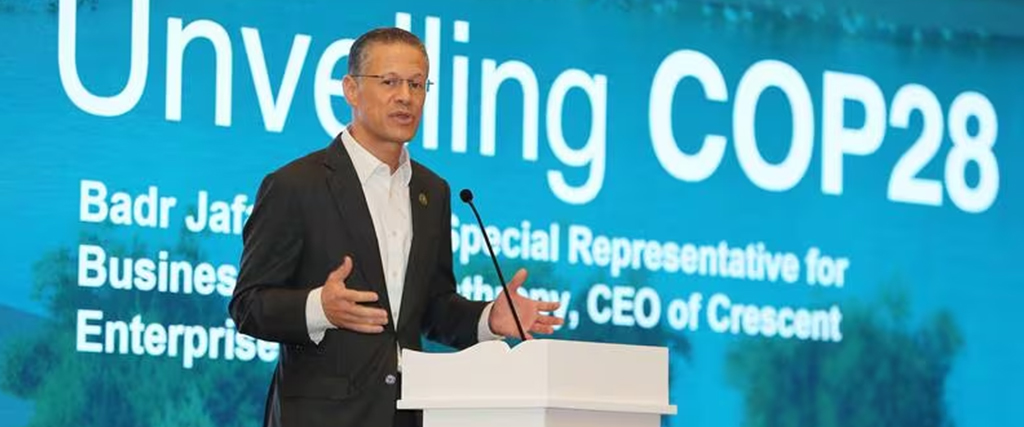Strategic Philanthropy in the Arab World
TECHNOLOGICAL INNOVATIONS
The concurrent health and economic crises that impacted much of the world during the COVID-19 pandemic served as a sharp reminder of our interconnectedness and collective vulnerability. Among other things, the experience underscored the fact that no corner of our world is immune to harm, and that no person or place is exempt from one day needing strategic and coordinated assistance. These truths were particularly pertinent in the Arab region, where a relatively young and aspiring population was deeply impacted by the pandemic’s sprawling socioeconomic consequences. While perhaps setting us back a few years in several respects, the pandemic has also prompted many of us to reassess how we give. It advanced certain changes in the culture of philanthropy in growth markets, and in the nature of the relationships that underpin these burgeoning philanthropic ecosystems. As we begin to emerge from the first global pandemic of our lifetimes, a new era of philanthropy appears to be on the horizon, bringing with it the potential for unprecedented levels of multi-sector collaboration, strategic alignment, and transparency. It is up to all of us to seize that opportunity.
The COVID-19 pandemic had a disruptive impact on nearly every aspect of our lives, including on philanthropic practices. In the Arab region and other growth markets, philanthropy became distinctly more charitable in nature during the pandemic, representing a reversal of the trajectory that the sector had appeared to be on during the previous decade. Throughout the 2010s, donors and other stakeholders had increasingly emphasized philanthropy’s potential to support long-term development, and to build more resilient societies by taking risks that some governments could not afford to. Philanthropic capital was frequently deployed to provide direct, targeted, and rapid relief to overlooked communities and sectors, as well as to invest in innovations with the potential to create a multiplier effect on impact. In the Arab region, the urgency and severity of the pandemic saw the region’s donors generally reverting to a more traditional charitable response – exemplified by Zakat and Sadaqah, the Islamic faith’s two forms of compulsory and discretionary almsgiving – instead of taking a more strategic and sometimes slower developmental approach.
However, now that the pandemic is beginning to subside in many parts of the world, it is more important than ever for philanthropy to once again be viewed through a long-term and developmentfocused lens. As we saw in the years before the pandemic, strategic philanthropy can be a vital path to addressing the compounding inequity across the globe. This framework for giving is especially critical within growth markets like the Middle East and North Africa, where the pool of philanthropic capital is expected to grow significantly in the coming decades. According to a recent global survey by the Philanthropy Alliance Foundation, 89% of respondents believe that Africa and Asia, including the Middle East, will see the highest growth in its philanthropic giving over the next 25 years.1
This surge could not come at a more crucial time. As the international community continues to struggle with raising the 5 to 7 trillion dollars needed annually to achieve the United Nations’ 2030 Sustainable Development Goals (SDGs),2 we are seeing an unprecedented scale of philanthropic capital that has the potential to deliver deeper and lasting results and impact. In Muslim majority countries alone, between 250 billion to 1 trillion dollars is deployed in Zakat and Sadaqah respectively each year.3 It is clear that access to capital is not the main impediment in our region, with even the humblest of estimates dwarfing global aid and humanitarian budgets in comparison. It is the coordinated and strategic deployment of this pool of philanthropic capital that we must work together to optimize.
SHIFTING DEMOGRAPHICS & GENERATIONAL WEALTH TRANSFER
Over the coming decade, the world is projected to witness the largest intergenerational wealth transfer in history, with roughly 68 trillion dollars expected to be passed down to members of the next generation.4 In growth market regions specifically, it is estimated that 26 trillion dollars will be transferred across generations within the next 20 years, while three quarters of the global gross domestic product (GDP) consumption is expected to shift to the Global South.5
These historic changes are already having a noticeable impact. Today, the world’s fastest growing economies are “emerging markets,” or what many like to now refer to as growth markets. As rapid economic growth and intergenerational wealth transfer continue to drive an increase in private wealth, growth markets are seeing an associated rise in philanthropic giving that goes beyond traditional charity. This trend is expected to accelerate in the future, especially in the Middle East and Africa, where the number of ultra-high net worth individuals, those with a net worth of 30 million dollars or more, is predicted to increase by 32% and 17%, respectively, by 2024.6
Coinciding with this geographical shift is a change in demographics, manifesting in a new generation of digitally savvy philanthropists who are transforming the practice of philanthropy.7 Young donors in particular have become more generous. While deepening their commitment to the causes and campaigns they support, they are demanding more handson approaches to giving, faster and more impactful results, and higher standards of governance, accountability, and transparency from the stewards of their funds.
TECHNOLOGICAL INNOVATIONS
In today’s global digital economy, giving is more convenient than ever thanks to innovative digital tools and online platforms that have opened up the act
of giving to “the one percent and the ninety-nine percent” alike.8 Disruptive technologies are enabling the unprecedented gathering, processing, and understanding of data, while emerging technologies, such as artificial intelligence (AI) and digital currencies, have the potential to reimagine philanthropy as we know it.
Next generation philanthropists are also leveraging technology and innovation to achieve greater, more profound impact. With this newfound digital accessibility, three out of four millennials are self-identifying as philanthropists, regardless of the scale of their almsgiving.9 At the same time, enhanced data harvesting and tech-enabled data analysis capabilities are enabling more strategic deployment of funds and greater transparency from recipient organizations, with the potential to address the trust gap that has hindered the sector. The Arab Giving Survey, for example, reported that 76% of donors require meaningful transparency in relation to the impact achieved and the effectiveness of a charity in achieving its goals, with 71% of respondents saying they would increase their donations in the case of more transparent reporting by the charities on how and where funds are spent.10
Along with the growing impact of technology, the COVID-19 pandemic also accelerated several changes to the nature of philanthropic decision-making. A recent study on philanthropy in high growth markets by the Center for Strategic Philanthropy at the University of Cambridge revealed that local recipients of philanthropic investment are now being mandated to act as their own decision makers due to their superior grasp of local needs and imperatives.11
The unique conditions created by the COVID-19 pandemic has led to grants becoming less restricted, and to grant makers being more flexible and efficient in their processes. As a result, many grantees were empowered to do more and to move faster with the assistance received, and were viewed as partners in generating lasting impact rather than being the mere beneficiaries of charitable generosity. For this narrative shift from a savior lens to a partner lens to be sustained beyond the pandemic, increasingly sophisticated levels of governance models will be required to enhance accountability and transparency, and to enable more evidence-based and high-quality data collection, processing, and analysis.
PHILANTHROPY IN THE ARAB REGION
Arab culture has long-standing traditions of charitable giving, particularly in relation to health and educational provision for the underprivileged. Notwithstanding the Arab region’s deep-rooted cultural and religious traditions of giving and community support, we face challenges in embracing the full potential of global shifts in philanthropy, and the resultant enhancement in both the quantity and quality of philanthropic impact. More evidence-based, impactdriven partnerships between entities, both within the region and outside of it, could create major opportunities to help overcome these challenges. Much needed reform of the regulatory environment around philanthropy in the region is also bound to bring about a step change in the strategic practice and the general joy of giving.
One impact of the pandemic has been an acceleration of the ongoing and long advocated transformation in the Arab region’s social impact sector, including a greater emphasis placed on the value of local knowledge and collaboration.
These transformations are especially important in light of the challenges to the development sector over the past five years or so, mainly as a result of concurrent humanitarian crises and the pandemic. Consequently the performance of this sector is more critical than ever in this region where two-thirds of the population is either poor or vulnerable to multi-dimensional poverty, and where youth unemployment rates remain among the world’s highest.12
BUILDING TOMORROW’S INFRASTRUCTURE
These recent developments, taken together, provide catalysts for greater and more effective philanthropy and progress within, and from, the Arab World. With the region facing increasingly complex and structural challenges, we have an obligation, as well as an opportunity, to ensure that social and environmental returns on the massive philanthropic investments from these markets reach their highest potential. This means building better infrastructure and creating incentives to support strategic philanthropy. This can be achieved through more initiatives focused on enhancing philanthropy’s regulatory frameworks, working more with localized data that reflects on-the-ground realities, and embracing stronger governance models to organize philanthropic work in order to make it easier to pool resources with a long-term, impactoriented view. One such example is the Pearl Initiative, a Gulf-based non-profit organization founded in 2010 that focuses on corporate accountability and transparency. The Initiative’s Governance in Philanthropy program works alongside the region’s leading corporate and family business donors to support them in sharing experiences and learnings with one another in order to deliver results-driven corporate philanthropic activities. This program, in collaboration with the Bill & Melinda Gates Foundation, has been actively raising awareness, creating networks, and inspiring action with a view of strengthening the Gulf region’s philanthropic ecosystem. The initiative engages diverse stakeholders, including Gulf-based philanthropists, philanthropic advisors, and corporate social responsibility professionals, through the convening of events and the provision of relevant resources that can be accessed via the Pearl Initiative’s online platform.
The research community also has a pivotal role to play in this process. Research on philanthropy has traditionally focused on Western Europe and North America, where high-profile, large-scale giving initiatives have been more prevalent. However, in recent years, several new institutions have been helping to fill this knowledge gap so that philanthropic organizations, policy-makers and other stakeholders in growth markets can develop evidence-based strategies without having to rely on learnings that have been copied and pasted or imperfectly adapted from other regions. In September 2021, New York University Abu Dhabi launched the Strategic Philanthropy Initiative (SPI), an academic and community-based platform that aims to shape a more vigorous and strategic practice of philanthropy in the Gulf and the broader Middle East and North Africa regions through the three tracks of research, convening, and training. The SPI has also announced plans to launch the region’s very first philanthropy accelerator to help nurture innovative philanthropy start-ups, and provide their founders with the tools and resources needed to thrive.
This initiative follows the launch of the Center for Strategic Philanthropy (CSP) at the Judge Business School at the University of Cambridge in 2020, which is dedicated to global growth markets.
Over the past two years, the CSP has engaged philanthropic practitioners and donors from across these regions to innovatively explore entrenched and often systemic societal and environmental challenges, many of which have been exacerbated by the pandemic.
Impact-driven academic initiatives such as these, which also strive to equip young donors and practitioners with the tools, resources, and infrastructure needed to enhance their impact, are particularly important in the Middle East and Africa region, where 60% of the population is under the age of 25.13 They can also serve as catalysts for new cross-border and cross-sectoral philanthropic networks that can bring together different areas of expertise and promote better collaboration across the board.
THE ROLE OF BUSINESS
Today, philanthropic giving in the Gulf region is estimated to be 210 billion dollars yearly, and with regional wealth on the rise, greater philanthropic commitments are likely to follow.14 However, this generous culture of corporate giving has historically been largely divorced from strategic philanthropy initiatives. The knowledge and research that will empower more strategic giving cannot be properly cultivated without deeper and more deliberate collaboration between the private sector, non-profit organizations, and governments. At a minimum, the private sector can take steps to timely deliver on its ambitious social impact goals by acquiring deeper understandings of social imperatives in the communities within which they operate, including through closer communications with governments and the philanthropic sector.
MAINSTREAMING PHILANTHROPY
Ultimately, embracing a more strategic and systematic approach towards giving has the potential to empower the Arab region’s expanding community of philanthropists, and to unlock much needed long-term capital and social innovation. Governments have a crucial role to play in spearheading the development of legislative frameworks for giving to create more efficient and effective regulatory systems that deliver greater transparency and accountability, thus maximizing the impact of philanthropy.
The business community must continue to prioritize giving to important causes, seek to integrate society’s needs into its business models, and collaborate with the non-profit sector to scale its impact. Non-profits need to view transparency, accountability, and open reporting as powerful sources of competitive advantage rather than administrative burdens. In turn, donors will be able to align their giving more efficiently with national and international development plans, and help to scale up promising social and environmental initiatives. We can all help kickstart this process by creating a more engaged donor community that takes a greater interest in where charitable funds are going, how they are being used, and what impact they are generating over time.
To achieve even greater impact and expand philanthropy’s role in the mainstream capital system, we can, and must, utilize every opportunity to dismantle key barriers to strategic giving. It is crucial that we take practical steps to maximize the efficiency and effectiveness of strategic philanthropy for the good of our region and the world, both now and in the future.
- Alliance Magazine. (2020, March). Indigenous Philanthropy 25(1). Available at: https://www. alliancemagazine.org/magazine/issue/march-2020/ [Accessed October 10, 2022].
- Johnson, P.D. (2018, April). Global Philanthropy Report: Perspectives on the Global Foundation Sector. Harvard Kennedy School the Hauser Institute for Civil Society. Available at: https://www.ubs.com/global/en/media/display-page-ndp/en-20180426-globalphilanthropy.html [Accessed October 10, 2022].
- Rehman, A. A., Pickup, F. (2018, September 7). Zakat for the SDGs. United Nations Development Program. https://www.undp.org/blog/zakat-sdgs
- Osterland, A. (2019, October 21). What the Coming $68 Trillion Great Wealth Transfer Means for Financial Advisors. CNBC. https://www.cnbc.com/2019/10/21/what-the-68-trillion-greatwealth-transfer-means-for-advisors.html
- IMF Datamapper. (2022). Real GDP Growth. International Monetary Fund. Available at: https://www.imf.org/external/datamapper/NGDP_RPCH@WEO/OEMDC/ADVEC/WEOWORLD [Accessed October 10, 2022].
- Knight Frank. (2020). The Wealth Report Middle East Supplement: The Global Perspective on Prime Property & Investment. Available at: https://content.knightfrank.com/research/1729/documents/en/the-wealth-report-middle-east-supplement-2020-7024.pdf [Accessed October 10, 2022].
- Coldwell Banker. (2019). A Look at Wealth: Millennial Millionaires. Available at: https://blog.coldwellbankerluxury.com/a-look-at-wealth-millennial-millionaires/ [Accessed October 10,2022].
- Hoekstra, C. (2021, July 5). Technology and the Democratization of Philanthropy. Alliance Magazine. https://www.alliancemagazine.org/blog/technology-and-the-democratisationof-philanthropy/
- Snel, R. (2021, May 4). Millennials are Redefining Philanthropy. Advisors Should Pay Attention. Barron’s. https://www.barrons.com/articles/millennials-are-redefiningphilanthropy-advisors-should-pay-attention-51620155394
- Arab Giving Survey. (2015). Philanthrophy in the GCC: Exploring the Giving Habits of Arabs Across the Region. Available at: https://www.philanthropyage.org/initiatives/#:~
:text=The%20Arab%20Giving%20Survey%20tracks,and%20to%20monitor%20rising%20trends. [Accessed October 10, 2022]. - Banerjee, S. (2022, May). System Change in Philanthropy for Development: A Research Framework for Global Market Markets. Cambridge Center for Strategic Philanthropy. University of Cambridge. Available at: https://www.jbs.cam.ac.uk/wp-content/uploads/2022/05/2022-05-csp-system-change-in-philanthropy-development.pdf [Accessed October 10, 2022].
- Oxford Poverty and Human Development Initiative. (2017). Arab Multidimensional Poverty Report. Available at: https://ophi.org.uk/arab-multidimensional-poverty-report-2017/#:~: Essay www.fikerinstitute.org 8
text=Its%20main%20goal%20is%20to,both%20in%20English%20and%20Arabic [Accessed October 10, 2022]. - Kabbani, N. (2022, March 9). How Will Digitalization Affect Youth Employment in MENA? The Brookings Institution. https://www.brookings.edu/opinions/ how-will-digitalizationaffect-youth-employment-in-mena/
- ZAWYA. (2022, October 13). Next Generation Charts New Path Towards Strategic Philanthropy [Press release]. Refinitiv Middle East. https://www.zawya.com/en/press-release/research-and-studies/next-generation-charts-new-path-towards-strategic-philanthropyub7sddod
As published by Fiker Institute in October 2022.

 Tweets by @BadrJafar
Tweets by @BadrJafar









